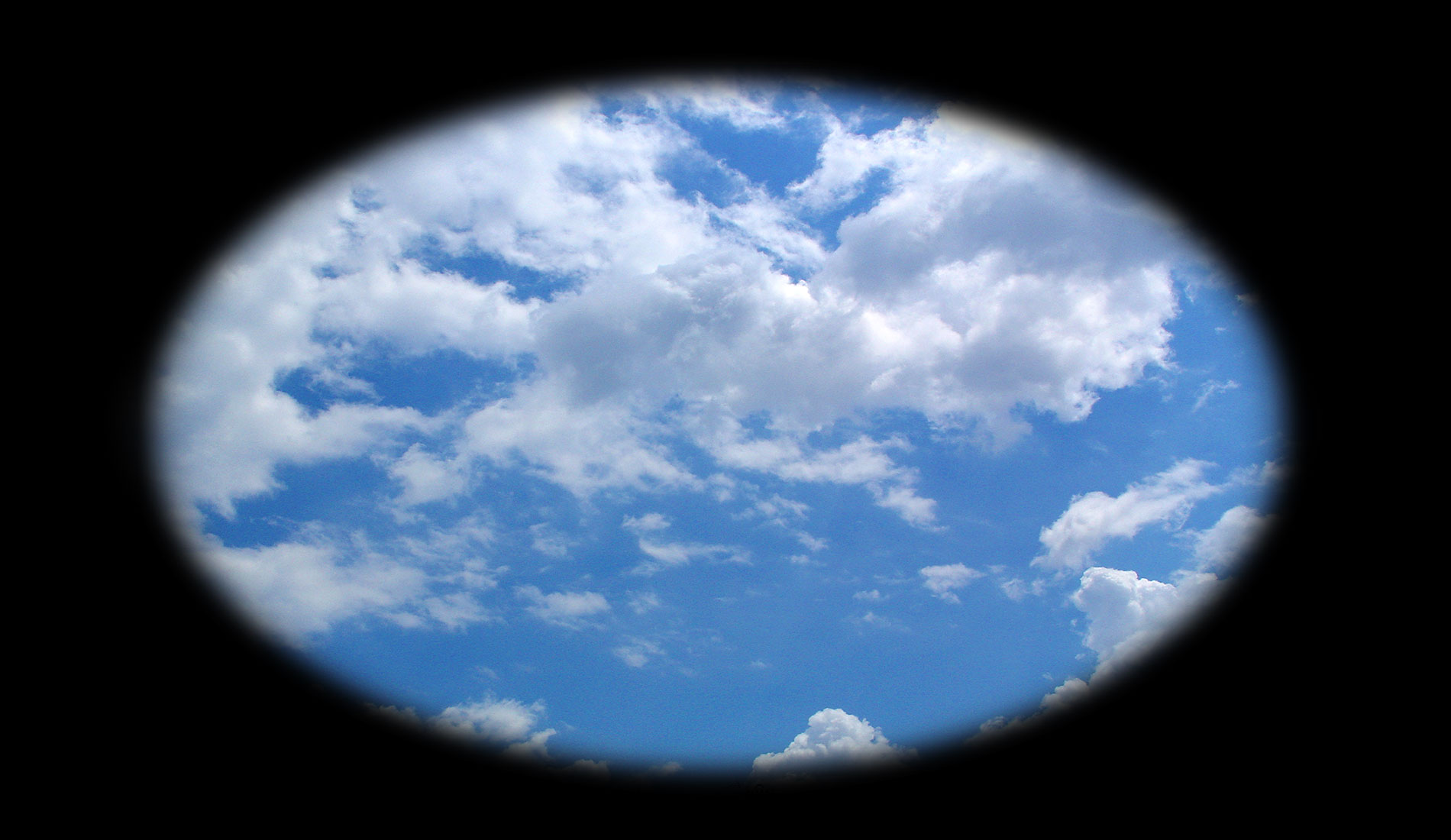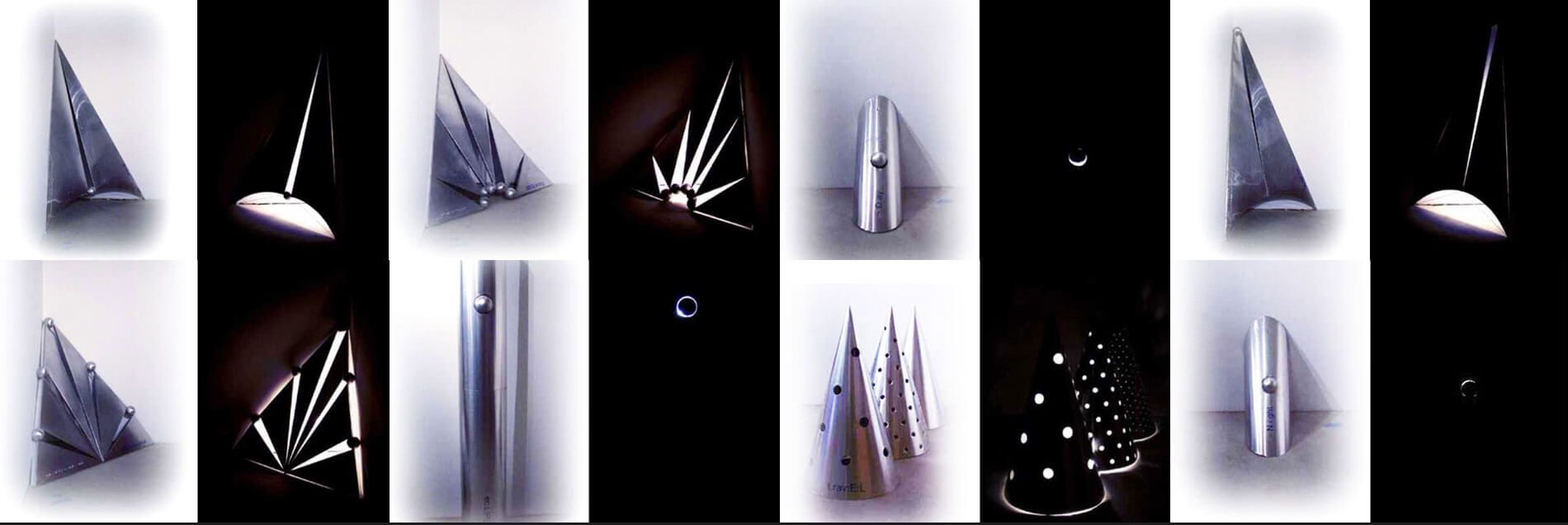


The ambiance installation "What man can do with one finger?" Dawor Preis continues questioning communication in art, which is typical of him, through virtual action on an observer inducing him to the active approach to the work of art. The author realizes the general human formulation of sign – meaning relationship at the level of human gesture, and develops further his idea deducing from the concept of natural lawfulness, the interpretation of the theme of the world, i.e. cosmos and a man, and its realization in art. In that manner parts of the installation may not be experienced without the attempt to encompass the notion of entirety which represents a carefully thought over cabinet ambiance imagined and realized exactly for exhibition permissions of “Karas” gallery. In the ambiance metamorphosis the logic of the premises happened to be found is being respected. This is being used as an equally valid part of the new ambiance, through articulation of the basic elements of three-dimensional composition: images and words brought up to the level of the verbal-visual marks, conceptually realized objects, and well-though through usability of the period of light and darkness due to various treatment of space, such as light and shadows in it, and dynamic values of reflections which are, through such simulations realized as miraculous effects. Preis’s ambiance cabinet has been characterized by rationality of calculation, but in all intuitive and unforeseeable features and seemingly unexplainable situations which happen at such “reconstructions” of spaces, i.e. realizations of works of art as an ambiance of the event. Using technologically modern media or these parts of installation which look like such, three phases of movement of the observer through the window have been objectified visually, i.e. the three phases of developing the basic theme inducing the visitor to the interactive approach to the experience of the exhibition are being stressed dramatically.
The basic theme emphasizes the relationship of the individual-author to the real world that is surrounding him with all questioning, analysis and doubts resulting from the attempt to integrally realize this relationship. An almost obsessive theme: me- world is being questioned through four communication channels – complex to the inherited feeling of responsibility and attempt to realize primary human wishes through the new personal relationship to the cosmos which surpasses limits of reality, introducing us into the state of fantasy, dreams and instinctive aspirations to understand the transcendental and futuresque. This new state is, at the same time, the author’s escape into the area of art, to the position at which he may relativize the prior relations, but also explore, experiment and create new relations, leading to cosmic dimensions and cosmological questions, i.e. into the new space into which the observer, if following the instructions, has been introduced by personal action, i.e. “invisible hand” of the author of the exhibition Dawor Preis.
From the observer’s perspective the introduction into the action begins in the ground floor through looking all over in four neon large boards which look like designed as advertisements. The author concentrates here on his fist presented according to the principle of universal body language understandable to the western civilization through four various gestures supplemented by textual sign. This body language has been understandable to everyone and comes down to movement of fingers of the author’s fist presented as a photograph on the black background. The raised thumb, the first finger, symbolizes the relationship to the friend. The second finger, forefinger has been directed outward, and, as its name says, shows the way. But, it warns, at the same time, and guides the stranger from oneself and thus gets the second symbolic meaning of a dagger or a sword, i.e. something dangerous what may injure us, like a poisonous snake tooth. Gesture of the third finger in this counting to the four has been skipped over, whereas on the third board the fourth finger has been marked – ring-finger, a finger which wears a ring, whereby the author problematizes with this finger the relationship to a woman. The last gesture was left to the fifth, the little finger, which symbolizes by its size the smallest, the children. The author focuses it by personal interpretation of the fist talk as a finger which entertains children by movement, but also opens space in the fist body into which a child may enter. These are four levels of relations and a man’s attempt to communicate towards a friend, a stranger, a woman and children. The meaning of these seemingly simple fist movements has been stressed, as also the complexity of relations which every sign symbolizes i.e. the magic quality of bodily communication between people, which looks to natural and simple, but is, as a matter of fact, by scope of its meanings complex and meaningful, as it is also difficult to realize, like the satisfaction of human needs surrounding us. Each gesture has also been textually underlined which leads to the unambiguousness of the message. But, how much time and space remains to satisfaction of one’s personal needs which are different from these everyday relations, and which do not become exhausted in them?
The alternative has been offered by the board with the photograph of the sky. This is the view focused upwards out of this-world borders. It symbolizes the road and exploration. The board with a finger on a switch shows the absurdity in realisation and irony in relation to these cosmic fantasies, but also the issue of the primary satisfaction. The observer comes across that question at the middle floor through auto-ironic ridicule of the author with his wishes as it has been marked with the middle finger which symbolizes, as late as of the Ancient Rome, the active phallus with the bent fingers on the sides which present testicles. The meaning of the gesture is insulting, but only consenting to communication leads one to the second floor of the gallery. This, at the same time, is the author’s ironic message to all who doubt in the purpose of artistic creation.
The observer who wishes to reach the final of the installation must get to the first floor. Here we find ourselves in some kind of the cosmos workshop. The first floor has been designed as a gallery laboratory with the objects in the room space which simulate an exhaust pipe, parts of a satellite antenna, parts of thermal cells, parts of power lines and similar. Imaginary parts of a space ship function independently according to cosmic laws, but they are also interrelated by the author’s scientific-fantastic approach. After the observer presses the switch suggested previously by the middle finger the entire state of the workshop changes and we witness a truly miraculous scene of creating galaxy. Now the same objects demand larger degree of the observer’s imagination, simulating the genesis of the planet, the arrival on the planet, departure from it, disappearance of the planet, eclipse of the planer, part of a day, part of a night and movement through the cosmos. The light changes as the general diffuse light in the room transforms into emission of the light from the objects themselves. The visual complex of the entire installation changes in that manner. The entirely dynamized space develops, of the same parts now seen in the dark, which at the same time make cosmos space laboratory endless, that creates a special atmosphere through color, as also various emissions of basic objects. Everything is possible here in cosmic dimensions. The secret of creation and movement has been presented. Under these conditions everything lives fantastically and dreams in higher spheres. For a moment, here, we can be alone.
Željko Marcijuš
